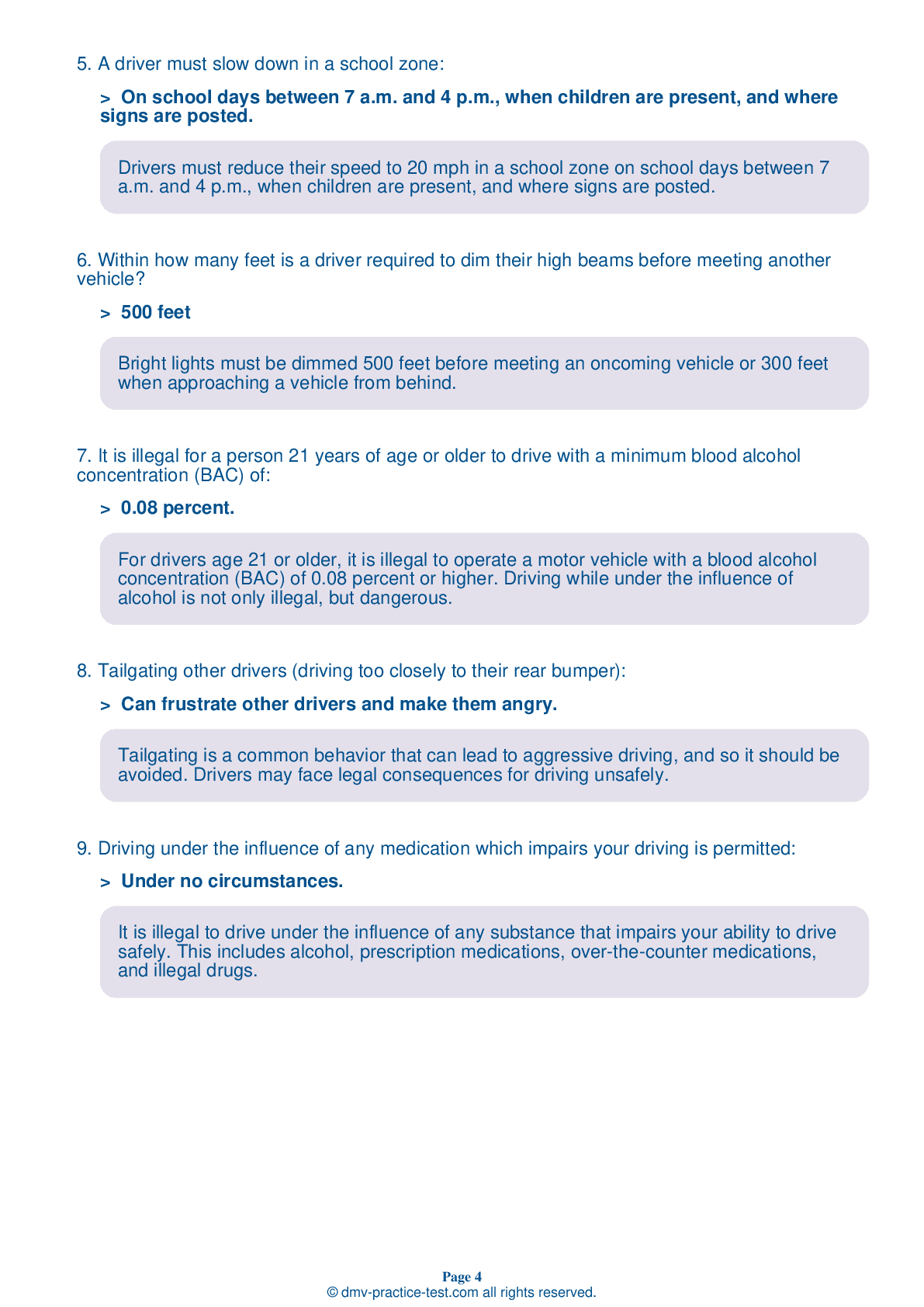FREE Illinois DMV Practice Test #7 Page 2 of 3
For January 2025, this set of Illinois DMV practise tests has been updated. It includes questions based on the most important traffic signs and rules for 2025 from the Illinois Driver Handbook. To study for the DMV driving permit test and driver's licence exam, use actual questions that are very similar (often identical!) to the DMV driving permit test and driver's licence exam.
Each question on the practise exam has a tip and explanation to help you recall the ideas. Questions about traffic rules, traffic signs, and driving statutes, as well as information from the Driver Handbook, will be included in the written portion of the official DMV test.
You must properly answer 38 of the 35 questions to receive a passing mark. To help you prepare for your Illinois instruction permit or driver's licence, take our DMV practise test.
The DMV exam is offered in a variety of languages.
Using any form of testing help will result in an automatic fail, and the DMV may take further action against your driver's licence, so avoid it.
13 . This sign means:

A five-sided yellow or yellow-green sign alerts drivers to either a school zone or school crossing.
14 . This sign shows one type of:
.png)
Warning signs are usually yellow with black markings. This sign warns that your current road ends at an intersection straight ahead. Slow down and prepare to yield or stop before turning right or left.
15 . A driver whose license has been revoked as a result of DUI must meet several requirements, including an evaluation for alcohol and drug problems and paying a reinstatement fee, to regain their license.
If you are convicted of a DUI, you must undergo an alcohol/drug evaluation, successfully complete a rehabilitation or alcohol/drug education program, have an administrative hearing with the Secretary of State, pay a reinstatement fee, and/or meet other requirements.
17 . This sign means you are approaching a railroad crossing that does not have a signal. You should:

At a railroad crossing marked with this sign, a driver should look both ways, listen for any trains, and be prepared to stop if any trains are nearby. Never try to outdrive an oncoming train.
18 . What should a driver do when approaching a traffic control signal that is not in operation?
When traffic control signals are not working, a driver must always treat the intersection as an all-way stop and come to a complete stop, unless otherwise directed by law enforcement. The driver must then look and yield the right-of-way before entering the intersection.
19 . When experiencing a tire blowout, the driver should apply the brakes quickly and pull off the roadway to check the tire.
If you experience a tire blowout, you should ease your foot off the gas pedal, keep a firm grasp on the steering wheel, pull safely off the roadway, and check the tires. You should not brake suddenly.
20 . This sign means:

This sign alerts you to the possibility of traffic merging into the main stream of travel. After checking to your side and rear, you should move into another lane, if possible, to allow merging motorists a clear path.
21 . This sign means:





